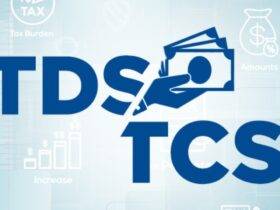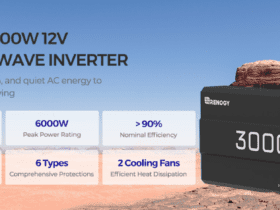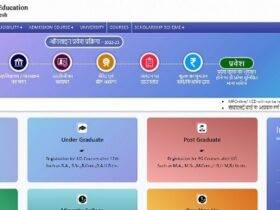These days, dynamics of buyer behavior are undergoing a profound transformation, driven by digitalization and shifting market trends. For sales professionals, understanding and adapting to these changes are paramount to success.
In this article, we will explore the significant shifts in buyer behavior and discuss strategies to navigate the modern sales landscape by adapting sales approaches, leveraging technology, and building meaningful relationships in a buyer-centric environment.
The Digital Evolution: Unveiling the Influences on Buyer Behavior
a. Online Research and Empowered Buyers:
- Modern buyers are empowered with information at their fingertips. They conduct extensive online research before engaging with sales representatives, shaping their preferences and expectations.
b. Multiple Touchpoints:
- Buyers interact with multiple touchpoints across various digital platforms. From social media to online reviews, the buyer journey is now multifaceted, requiring sales professionals to adapt their approach accordingly.
c. Demand for Personalization:
- Buyers expect personalized experiences tailored to their needs and preferences. Generic, one-size-fits-all sales pitches are becoming obsolete in the era of hyper-personalization.
Strategies for Adapting Sales Approaches in a Digital World
a. Customer-Centric Selling:
- Shift the focus from product-centric selling to customer-centric selling. Understand the unique needs and pain points of each buyer and tailor your approach accordingly.
b. Educational Content and Thought Leadership:
- Position yourself as an industry authority by providing valuable, educational content. Buyers appreciate organizations that offer insights and solutions rather than just pushing products.
c. Seamless Omnichannel Experience:
- Create a seamless experience across all channels. Whether a buyer engages through social media, email, or in-person, ensure consistency in messaging and a unified brand experience.
Leveraging Technology for Sales Success
a. Data-Driven Insights:
- Harness the power of data analytics to gain insights into buyer behavior. Use data-driven strategies to identify trends, preferences, and areas for improvement in your sales process.
b. Customer Relationship Management (CRM) Systems:
- Implement advanced CRM systems to centralize customer data, track interactions, and enhance communication. CRM tools provide a comprehensive view of the customer journey, enabling more informed decision-making.
c. Email Marketing:
- In the realm of digital sales, email marketing remains a potent tool. Craft personalized and targeted email campaigns to engage buyers at different stages of the sales funnel. Implementing automation and analytics in email marketing can enhance efficiency and provide valuable metrics for continuous improvement.
Building Relationships in a Digital World
a. Virtual Relationship Building:
- Leverage virtual communication tools to build relationships in the absence of face-to-face interactions. Video calls, webinars, and virtual events can foster a sense of connection and trust.
b. Social Selling:
- Embrace social selling by engaging with buyers on social media platforms. Share relevant content, participate in discussions, and establish a strong online presence to build relationships in the digital space.
c. Feedback and Continuous Improvement:
- Solicit feedback from buyers and use it to adapt and improve your sales strategies. A commitment to continuous improvement based on customer input is vital in a rapidly changing market.
Conclusion
Adapting to changing buyer behavior requires a proactive approach that embraces innovation, technology, and a deep understanding of the customer journey. Email marketing, as a pivotal part of this transformation, stands as a testament to the enduring power of personalized and targeted communication in the digital era.
Adapting to Changing Buyer Behavior: Navigating the Modern Sales Landscape
These days, dynamics of buyer behavior are undergoing a profound transformation, driven by digitalization and shifting market trends. For sales professionals, understanding and adapting to these changes are paramount to success.
In this article, we will explore the significant shifts in buyer behavior and discuss strategies to navigate the modern sales landscape by adapting sales approaches, leveraging technology, and building meaningful relationships in a buyer-centric environment.
- The Digital Evolution: Unveiling the Influences on Buyer Behavior
- Online Research and Empowered Buyers:
- Modern buyers are empowered with information at their fingertips. They conduct extensive online research before engaging with sales representatives, shaping their preferences and expectations.
- Multiple Touchpoints:
- Buyers interact with multiple touchpoints across various digital platforms. From social media to online reviews, the buyer journey is now multifaceted, requiring sales professionals to adapt their approach accordingly.
- Demand for Personalization:
- Buyers expect personalized experiences tailored to their needs and preferences. Generic, one-size-fits-all sales pitches are becoming obsolete in the era of hyper-personalization.
- Strategies for Adapting Sales Approaches in a Digital World
- Customer-Centric Selling:
- Shift the focus from product-centric selling to customer-centric selling. Understand the unique needs and pain points of each buyer and tailor your approach accordingly.
- Educational Content and Thought Leadership:
- Position yourself as an industry authority by providing valuable, educational content. Buyers appreciate organizations that offer insights and solutions rather than just pushing products.
- Seamless Omnichannel Experience:
- Create a seamless experience across all channels. Whether a buyer engages through social media, email, or in-person, ensure consistency in messaging and a unified brand experience.
- Leveraging Technology for Sales Success
- Data-Driven Insights:
- Harness the power of data analytics to gain insights into buyer behavior. Use data-driven strategies to identify trends, preferences, and areas for improvement in your sales process.
- Customer Relationship Management (CRM) Systems:
- Implement advanced CRM systems to centralize customer data, track interactions, and enhance communication. CRM tools provide a comprehensive view of the customer journey, enabling more informed decision-making.
- Email Marketing:
- In the realm of digital sales, email marketing remains a potent tool. Craft personalized and targeted email campaigns to engage buyers at different stages of the sales funnel. Implementing automation and analytics in email marketing can enhance efficiency and provide valuable metrics for continuous improvement.
- Building Relationships in a Digital World
- Virtual Relationship Building:
- Leverage virtual communication tools to build relationships in the absence of face-to-face interactions. Video calls, webinars, and virtual events can foster a sense of connection and trust.
- Social Selling:
- Embrace social selling by engaging with buyers on social media platforms. Share relevant content, participate in discussions, and establish a strong online presence to build relationships in the digital space.
- Feedback and Continuous Improvement:
- Solicit feedback from buyers and use it to adapt and improve your sales strategies. A commitment to continuous improvement based on customer input is vital in a rapidly changing market.
Conclusion
Adapting to changing buyer behavior requires a proactive approach that embraces innovation, technology, and a deep understanding of the customer journey. Email marketing, as a pivotal part of this transformation, stands as a testament to the enduring power of personalized and targeted communication in the digital era.


































Leave a Reply